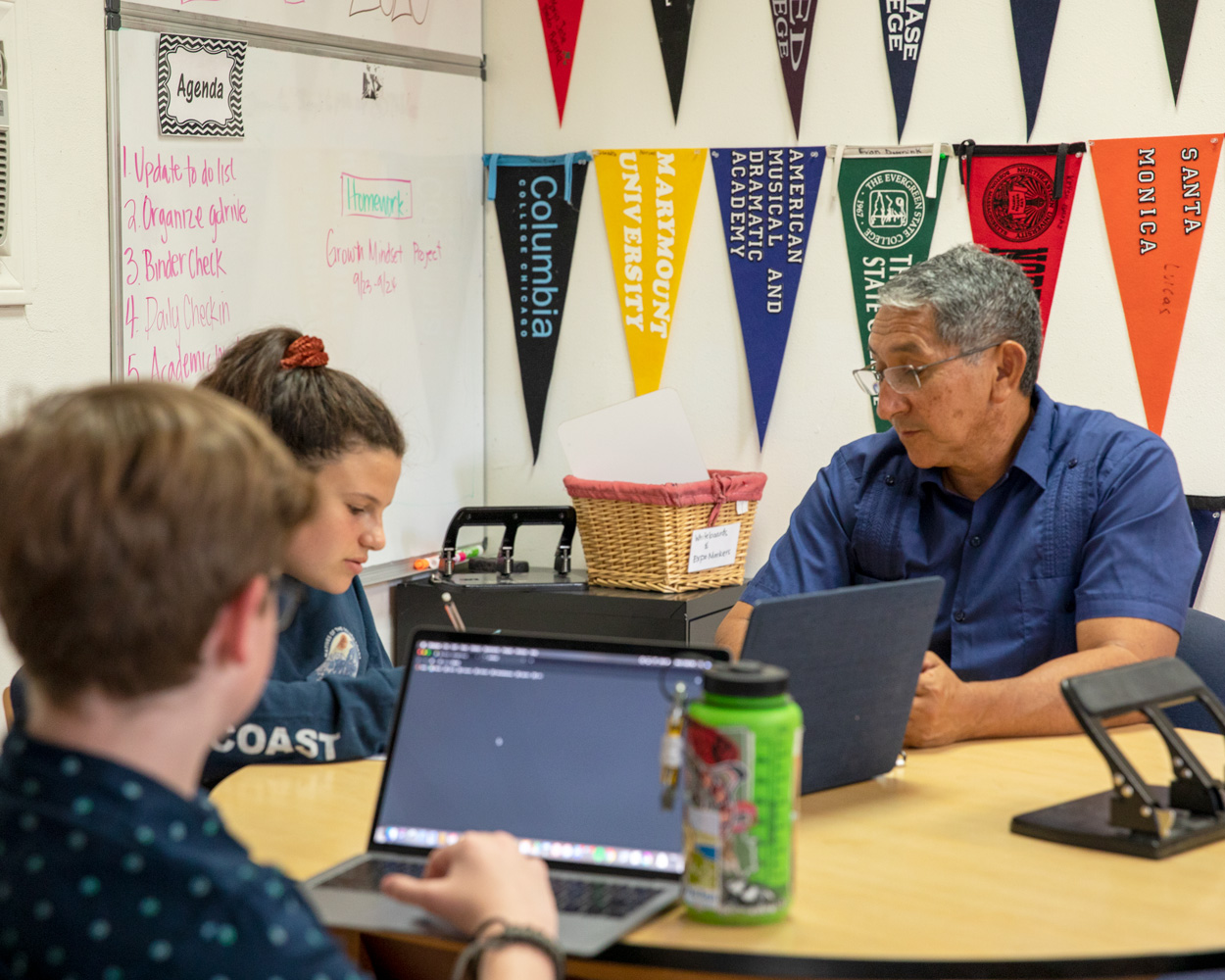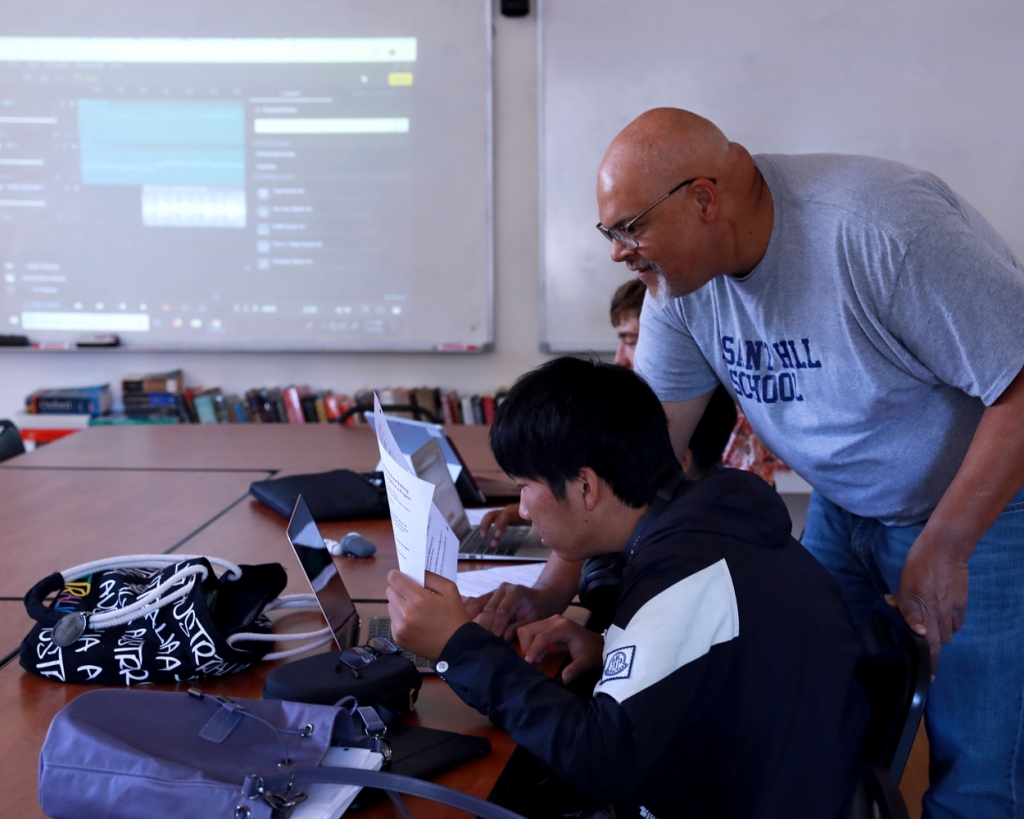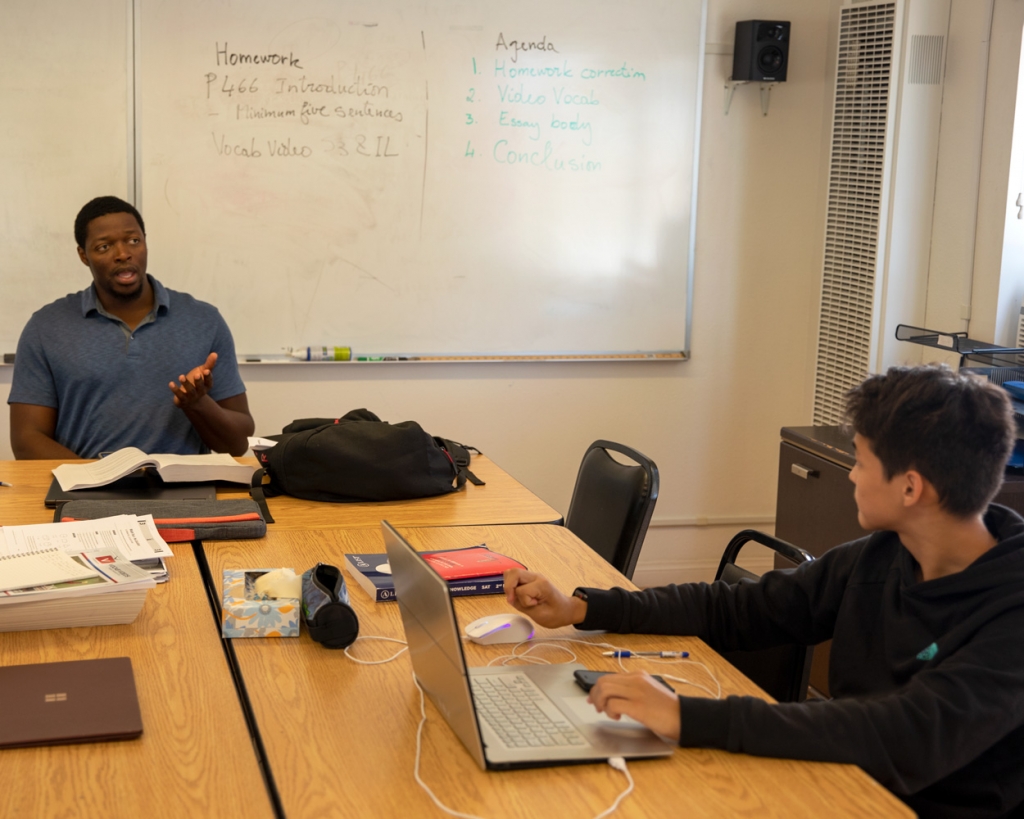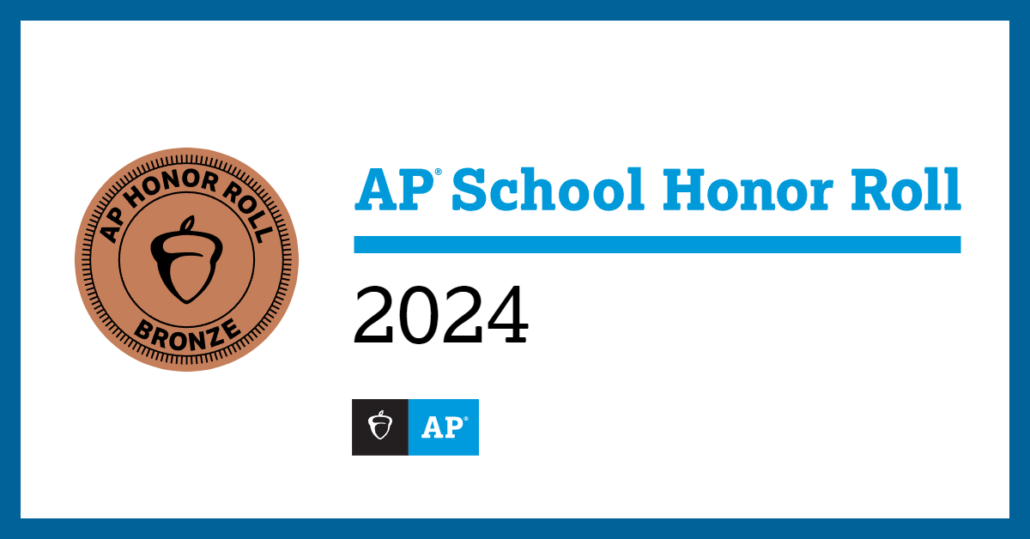ePortfolios: Emerging Practices
Kelly Henschel, MSEd, Assistant Director of Teaching and Learning
Portia Johnson, MEd, Head of School

As colleges and universities seek to prepare students for the new world ahead, many are turning to digital portfolios (ePortfolios), which require students to use basic web and design skills and to think metacognitively and reflect on their own learning. A recent study of university programs using digital portfolios summarized their findings: “Students who identify the narrative themes running through their experiences, and use those themes to develop an online presence, are able to reflect, construct, and articulate a professional identity through the ePortfolio” (Cordie, Sailors, Barlow, and Kush 2019). Colleges and university programs are seeing the value of helping students create digital professional identities to be used when seeking employment after college. “Recent surveys now show 50% of U.S. students are using ePortfolios during their college years” (Eynon and Gambino 2018). Portfolios, in and of themselves, are not a new practice. For years, students have created portfolios for visual and performing art colleges and conservatories; however, as ePortfolios become more prevalent at the university level, admissions offices are beginning to use ePortfolios to look more holistically at students outside of the arts, seeing beyond their test scores and grade point averages. At the 2016 National Association for College Admission Counseling (NACAC) conference, a panel of admission officers shared what they learned using ePortfolios beyond the arts in their admissions process and said that ePortfolios “translate into a real opportunity for the student to get into a university and a program that they might not otherwise” (Peterson and Byrne 2016). Data collected from the MIT admissions office show a growing number of ePortfolios being submitted, allowing admissions officers to view and accept students who may not have been accepted using the traditional application process. The increasing popularity of portfolio submissions has influenced both the Common Application and the Coalition for College Access Application to include a portfolio submission tab. One avenue for this was the use of the digital locker that allowed ninth-grade students to start collecting work that demonstrated their learning. “The idea is to encourage ninth graders to begin thinking more deeply about what they are learning or accomplishing in high school…and to help them emerge in their senior year with a body of work that can be used to help identify appropriate colleges and apply to them” (Jaschik 2015). The goal is to encourage students to document their learning and to demonstrate their talents in a way that a traditional application cannot. The Common Application has changed their art portfolio submission to a portfolio submission using Slide Room technology. A growing number of colleges are accepting portfolios outside of the traditional art portfolio using that technology integration. As the practice of ePortfolios increases, school college counselors and independent educational consultants (IECs) will need to adjust their practice in advising students. Bright, capable, and talented students who may not shine in traditional applications can now supplement their applications with a portfolio of demonstrated learning and work. The following guidelines will help advisors in this process.

Encourage students to start early by collecting and organizing a body of work that demonstrates their aptitude as learners.
Students will need to be advised about the types of work samples to include in their portfolio and how to reflect on their learning in a way that demonstrates metacognitive thought. Providing clear guidelines for the types of work included will help students collect work that is varied in format (multimedia, essays, and visual and auditory files) and provides evidence of learning. In addition, students will need help organizing and storing their materials so that files can be easily accessed when the application process begins. That can be done efficiently through Google Drive, where files can be shared between the student and their college counselor or IEC. It can also be done through the Coalition application, which allows IECs to help a student review their digital locker of materials.
Develop and maintain a list of colleges and universities that allow portfolio submission.
The list of schools that accept portfolio submissions is changing at a rapid rate. Many test-optional schools allow for portfolios as do selective programs, such as the maker programs at MIT and Carnegie Mellon. To date, more than 140 schools are using the Coalition for College Access application process. Some schools, such as Lewis and Clark, specify the requirements of their test-optional portfolio path, detailing the types of authentic assignments and teacher evaluations to be included. Because this list is ever changing, it is important to continually seek out updates.
Explore the various platforms used in creating ePortfolios.
With their increased popularity and rapidly changing technology, the applications and programs used in this process change quickly. Some programs, such as Google Sites, allow students to upload and publish materials throughout their high school years on a single platform. Art schools and conservatories use varying platforms and requirements for their portfolios. The Common Application and the Coalition for College Access each have their own application portals for students to submit portfolio entries.
Published in IECA Insights August/September 2019

References
- Cordie, Sailors, Barlow, and Kush 2019
- Eynon and Gambino 2018
- Peterson and Byrne 2016
- Jaschik 2015
- Henschel and Johnson 2019
Besant Hill School of Happy Valley
8585 Ojai Santa Paula Rd
Ojai, CA 93023
contact@besanthill.org
Tel: (805) 646-4343
Fax: (805) 646-4371






 Besant Hill School of Happy Valley
Besant Hill School of Happy Valley Besant Hill School
Besant Hill School